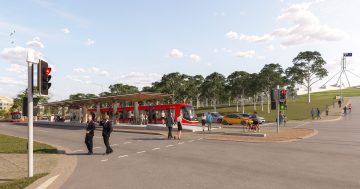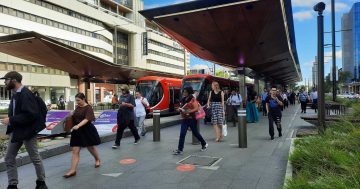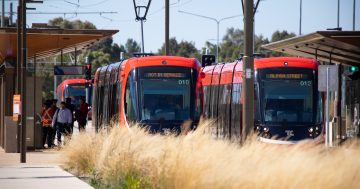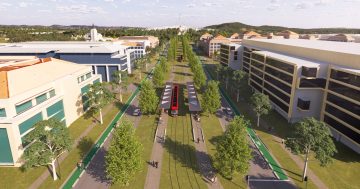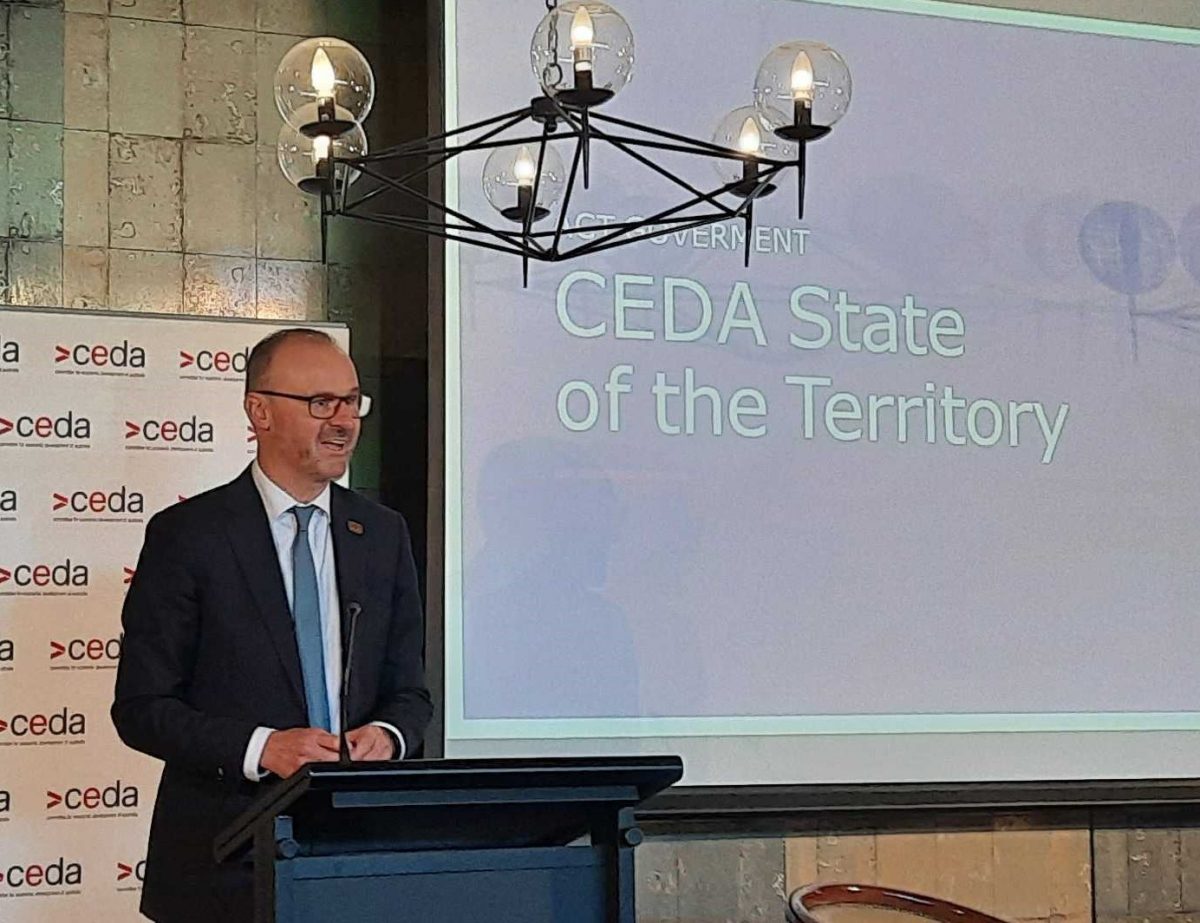
Chief Minister Andrew Barr at the CEDA event at the Kurrajong Hotel: wants Commonwealth to be light rail partner. Photo: Ian Bushnell.
Major Canberra public projects may not necessarily be delayed, but the pressures of a booming population and an overheated infrastructure sector will mean the ACT Government will face “sequencing” challenges in its infrastructure program, according to Chief Minister Andrew Barr.
Speaking after delivering his State of the Territory address to the Committee for Economic Development of Australia (CEDA) event today, Mr Barr said the ACT faced tough decisions driven by market constraints, the availability of materials and labour, and Commonwealth priorities in housing, public transport and healthcare, particularly the need to rebuild primary care after a decade of neglect.
Mr Barr said in his speech that the government would be providing updates to its infrastructure plan over the next 18 months, starting with entertainment, arts and sporting projects in the coming weeks, followed by health and education priorities.
He said later that this did not mean delays to big projects such as the Canberra Theatre redevelopment and light rail, but the ACT’s goals in extending light rail into the National Triangle and boosting the supply of affordable housing would rely to some extent on deals with the Commonwealth.
The ACT would talk to the Albanese Government over the next 12 to 18 months about partnering with the Territory on light rail stage 2B across the lake to Woden.
“The Commonwealth has made some commitments already on Stage 2A, but we will need them to step up as it’s their land and it will be going to service largely the APS – 50,000 to 60,000 jobs in the National Triangle,” Mr Barr said.
“It’s a very powerful argument for public transport.”
Mr Barr said that if the Federal Government continued increasing employment in the National Triangle, it could not keep building $200 to 300 million car parks.
He had told Finance and Public Service Minister Senator Katy Gallagher that the next investment for the Triangle should be in public transport and light rail.
Mr Barr told the CEDA event that the Territory would continue to borrow for long-term projects like light rail that would benefit future generations.
“I don’t think it’s reasonable for this generation to be asked to pay upfront for assets that will be enjoyed for the century,” he said.
In housing, the Commonwealth had indicated a potential funding stream for more public and social housing through the Accord but the ACT was awaiting the detail.
Mr Barr said that type of housing would also need land, and while there had been some progress on the former CSIRO site in Canberra’s north, the chances of using part of the Australian Institute of Sport precinct in Bruce had evaporated with the Sports Commission’s plans to rejuvenate the site.
The ACT was now in talks with the ASC on redeveloping the precinct beyond the restoration and opening of the AIS Arena.
“What’s being proposed is a rejuvenation of the sports facilities with potential for some ancillary precinct improvements like hotels,” Mr Barr said.
“I’d love to see Bentspoke or Capital set up facilities out there, similar to Fyshwick or Dairy Road.”
Mr Barr said this week’s announcement of Canberra being a potential A-League football franchise did not change the government’s position on a new stadium, as it did not depend on that kind of investment.
But what shape the AIS rejuvenation will take is expected to become clearer in the coming weeks, including the future of Canberra Stadium.
Mr Barr said that the planning reform project would be crucial to the ACT providing the 30,000 extra homes needed over the next five years for a population headed towards 500,000 by 2027.
He repeated his description of gentle urbanism, not just to provide quantity but a more diverse and affordable mix of dwellings – the missing middle – in established suburbs, where many people want to live but are currently priced out of.
“There is a way to do this to address the legitimate concerns for people about neighbourhoods changing dramatically, but at the same time offer more product and a house size of 100 to 150 square metres,” Mr Barr said.
The Chief Minister also painted a picture of a strong and growing ACT economy with low unemployment and a stronger fiscal position aided by a greater share of GST revenue due to its increased population.
“Strong population growth over recent years, combined with the return of international students and migrants, will further support the ongoing resilience of the ACT economy,” he said.












